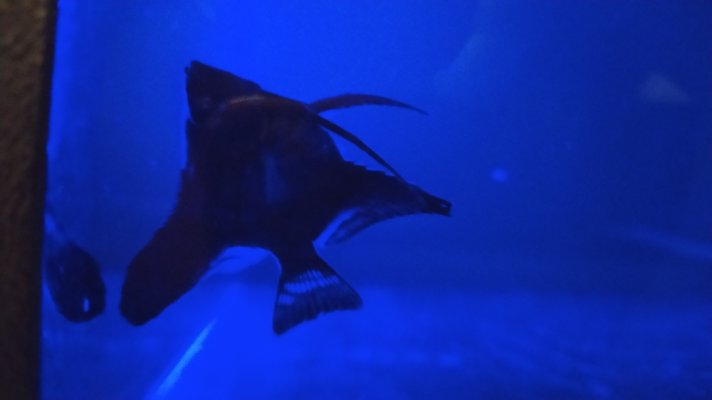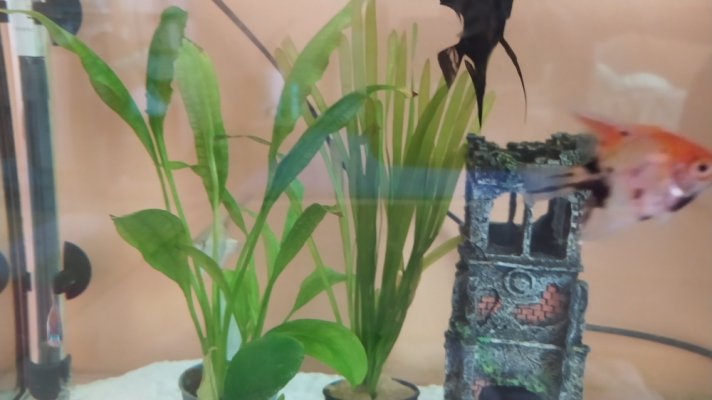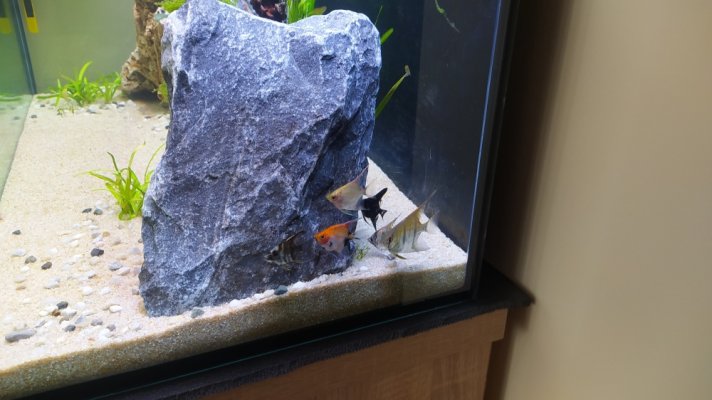History: I have a 200L fish tank, I had 6 angelfish and others like tetras, ancis, corys. The first problem happened to one of my angelfish, he had white spots on his fins and body, I guess it was icht. I successfully cured him with salt water dips, but after that I noticed some signs of fin rot.
I had an other angelfish, who died a week ago I think he was raised in bad conditions, he came with broken fins and didn't grow at all. He stopped eating 2 weeks ago and died eventually. He was coming at the food, but always spitted it out. I tried to swap the food source but refused everything. I couldn't help him.
I think he was raised in bad conditions, he came with broken fins and didn't grow at all. He stopped eating 2 weeks ago and died eventually. He was coming at the food, but always spitted it out. I tried to swap the food source but refused everything. I couldn't help him.
My main problem is, that now 3 other angels stopped eating day after day, starting with the one with fin rot. No visible signs of any icht or external parasites though. They used to be casual angelfish, extremely interested in food, always coming towards me and my hand. They were peaceful towards others. Now things changed as the 6th angel died.
Behaviour change: they turn away from my hand and are not so friendly. They come at the surface when I give them food, but they refuse it, or spit it, just like my dead angel used to do. Which is very strange, they sometimes shake their fins and body as if they had some kind of nervous system problem. And they are always hiding and when any of the fish come near them, they will show aggression and make them flee.
Of course I do water changes frequently, and did like 30% after the death of the angel. I have a few plants that are growing well, there are some algae at the top of the tank, but I don't think the water quality is bad, I have strong filtration which is well cycled. I should buy a test kit though.
I have really no idea what happened and I really like my fish and don't want to see them die . I would really appreciate any help. Could the dead fish somehow infect the others or could the fin rot spread to other fish as well (their fins are nice looking)?
. I would really appreciate any help. Could the dead fish somehow infect the others or could the fin rot spread to other fish as well (their fins are nice looking)?
I had an other angelfish, who died a week ago
My main problem is, that now 3 other angels stopped eating day after day, starting with the one with fin rot. No visible signs of any icht or external parasites though. They used to be casual angelfish, extremely interested in food, always coming towards me and my hand. They were peaceful towards others. Now things changed as the 6th angel died.
Behaviour change: they turn away from my hand and are not so friendly. They come at the surface when I give them food, but they refuse it, or spit it, just like my dead angel used to do. Which is very strange, they sometimes shake their fins and body as if they had some kind of nervous system problem. And they are always hiding and when any of the fish come near them, they will show aggression and make them flee.
Of course I do water changes frequently, and did like 30% after the death of the angel. I have a few plants that are growing well, there are some algae at the top of the tank, but I don't think the water quality is bad, I have strong filtration which is well cycled. I should buy a test kit though.
I have really no idea what happened and I really like my fish and don't want to see them die



